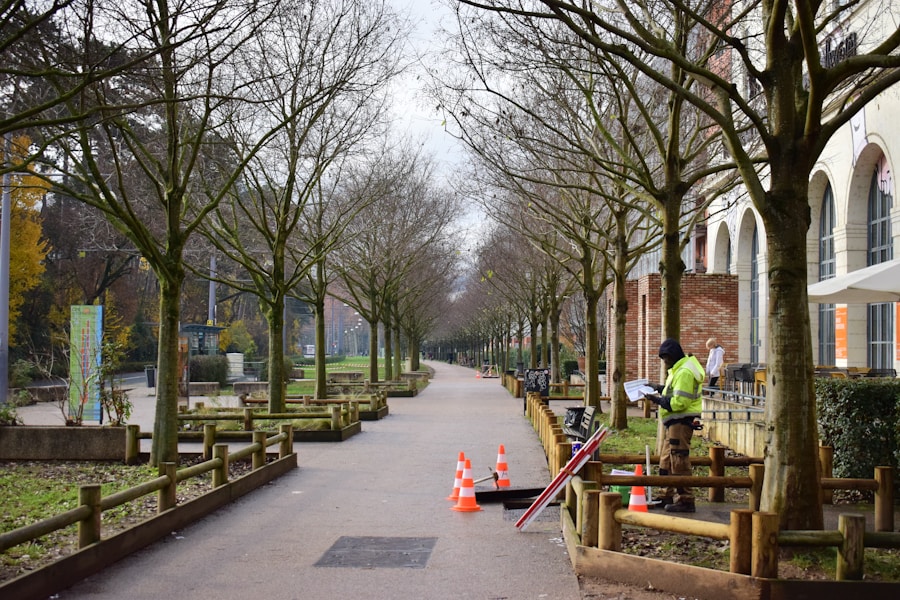Seasonal maintenance is crucial for the longevity and durability of pavement surfaces. As the seasons change, so do the environmental conditions that can impact the integrity of pavement. Regular maintenance helps to identify and address issues before they become major problems, saving time and money in the long run. By staying on top of seasonal maintenance, property owners can ensure that their pavement remains safe, functional, and aesthetically pleasing throughout the year.
In addition to preserving the appearance and functionality of pavement, seasonal maintenance also plays a key role in preventing accidents and injuries. Cracks, potholes, and other pavement defects can pose serious safety hazards for pedestrians and drivers. By addressing these issues through regular maintenance, property owners can create a safer environment for everyone who uses their pavement. Overall, seasonal maintenance is essential for protecting the investment in pavement and ensuring the safety and satisfaction of all who use it.
Pavement Inspection and Assessment
The first step in seasonal maintenance is a thorough inspection and assessment of the pavement surface. This involves identifying any visible signs of damage, wear, or deterioration, as well as evaluating the overall condition of the pavement. During this process, it’s important to look for cracks, potholes, uneven surfaces, drainage issues, and other potential problems that could impact the performance and safety of the pavement.
In addition to visual inspections, it’s also important to conduct regular assessments of the pavement’s structural integrity. This may involve testing the pavement’s load-bearing capacity, conducting core samples, or using ground-penetrating radar to identify any underlying issues that may not be visible on the surface. By thoroughly inspecting and assessing the pavement, property owners can gain a better understanding of its condition and identify any necessary maintenance or repairs.
Repairing Cracks and Potholes
One of the most common issues that arise with pavement surfaces is the development of cracks and potholes. These defects can be caused by a variety of factors, including freeze-thaw cycles, heavy traffic, and natural wear and tear. Left unaddressed, cracks and potholes can worsen over time, leading to more extensive damage and costly repairs. As part of seasonal maintenance, it’s important to repair these defects as soon as they are identified.
There are several methods for repairing cracks and potholes, depending on the severity and extent of the damage. For smaller cracks, crack sealing is often an effective solution. This involves filling the crack with a specialized sealant to prevent water infiltration and further deterioration. For larger cracks and potholes, patching or filling with asphalt or concrete may be necessary to restore the integrity of the pavement surface. By addressing these issues promptly, property owners can prevent further damage and extend the lifespan of their pavement.
Sealcoating and Resurfacing
Sealcoating is an essential part of seasonal maintenance for asphalt pavement surfaces. This protective coating helps to seal out moisture, oils, and other harmful substances that can cause deterioration and damage to the pavement. By applying a fresh coat of sealant on a regular basis, property owners can extend the life of their pavement and maintain its appearance and functionality.
In addition to sealcoating, resurfacing may be necessary to address more extensive wear and tear on the pavement surface. This process involves applying a new layer of asphalt or concrete over the existing surface to restore its smoothness and structural integrity. Resurfacing can help to eliminate minor cracks, ruts, and other surface defects, providing a fresh and durable pavement surface for years to come.
Clearing Drainage Systems
Proper drainage is essential for maintaining the integrity and performance of pavement surfaces. Without adequate drainage, water can accumulate on the pavement, leading to erosion, deterioration, and safety hazards. As part of seasonal maintenance, it’s important to clear and inspect drainage systems to ensure they are functioning properly.
This may involve removing debris from gutters, drains, and catch basins, as well as checking for any blockages or obstructions that could impede water flow. In some cases, it may be necessary to repair or replace damaged drainage components to ensure effective water management. By maintaining proper drainage systems, property owners can prevent water-related damage and preserve the quality of their pavement surfaces.
Leaf and Debris Removal
During the fall season, leaves, branches, and other debris can accumulate on pavement surfaces, creating safety hazards and promoting deterioration. As part of seasonal maintenance, it’s important to regularly remove leaves and debris from pavement areas to prevent these issues from occurring.
This may involve sweeping or blowing leaves off the pavement surface, as well as clearing any debris from gutters, drains, and other drainage components. By keeping pavement surfaces clear of leaves and debris, property owners can maintain a safe and attractive environment for pedestrians and drivers.
Winter Preparation and Snow Removal Plan
As winter approaches, it’s important to prepare for snow and ice removal to ensure safe and accessible pavement surfaces. This may involve developing a snow removal plan that outlines responsibilities, equipment needs, and procedures for clearing snow and ice from pavement areas.
Property owners should also consider applying de-icing agents or anti-icing treatments to prevent ice formation on pavement surfaces. By preparing for winter weather in advance, property owners can minimize safety hazards and maintain functional pavement surfaces throughout the colder months.
In conclusion, seasonal maintenance is essential for preserving the appearance, functionality, and safety of pavement surfaces. By conducting regular inspections, addressing defects promptly, and implementing proactive maintenance strategies, property owners can protect their investment in pavement and create a safe environment for all who use it. With proper care and attention throughout the year, pavement surfaces can remain durable and attractive for years to come.

